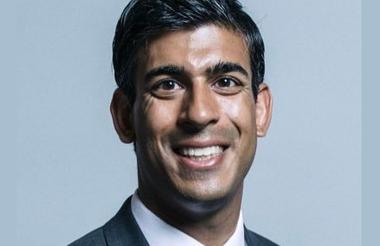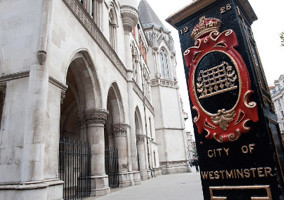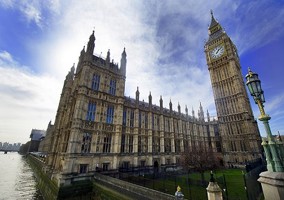One day last summer, something strange happened.
A large charity sent out a message on Twitter. The charity had just been awarded a grant from the government's Coronavirus Community Support Fund (CCSF), and it wanted to say thank you for the emergency support.
This didn’t make sense.
The CCSF was established in April 2020, backed with £200m in public money and an unequivocal promise from the chancellor Rishi Sunak. It was part of an emergency funding package to support “small and medium-sized charities” which were working “at the heart of local communities”, Sunak said.
The CCSF was separate from another pot of funding which government departments gave directly to large national charities, targeting a narrow range of issues like homelessness and hospice care.
And yet this message suggested some CCSF money had still ended up at very large organisations, charities which had not been in the government’s initial plans.
What was going on?
Last week, the first independent evaluation of the CCSF was released (another, looking at value for money, is coming later in the year). This research provided some, but not all, the answers to that question.
Spending
Firstly, data on the CCSF is now public, so anyone who wants to wade through the spreadsheets can see where the money went.
As you would expect, most of it resembles exactly the sort of funding programme the government promised. The main chunk of grants were each worth between £5,000 and £10,000, and helped thousands of small and medium-sized charities all over the country support their communities.
As the National Lottery Community Fund (NLCF), which distributed the funds, rightly points out, this was essential stuff. It ensured that support reached people in desperate need as the pandemic gripped. But the data also shows some massive grants, which stand out a mile next to these smaller payments.
For example, seven charities received grants worth over £500,000.
The NLCF gave Young Minds Trust £699,000 and Catch-22 £653,000. Newline received £599,000 and Sense got £510,000. There was £506,000 for SafeLives (which was founded by the civil society minister Baroness Barran) and £500,000 for the Alzheimer’s Society.
There were a further 13 grants worth over £200,000, plus other awards to very large charities including St John Ambulance, Age UK and Alzheimer’s Society.
This isn’t to suggest for a moment that these charities didn’t face financial problems resulting from the pandemic or that these grants won’t fund brilliant work for people in need. Indeed, if a funder is going to make grants this large then of course they need to go to big organisations equipped to spend such sums in a tight timeframe (it all had to be out the door by March 2021).
But the fund clearly didn't only focus on smaller charities. Those larger grants didn't match what the fund was set up to achieve. The evaluation found that overall one in 10 of all the grants – and a quarter of all the cash – went to charities with an annual income over £1m, the most widely-used measure of a large charity.
As Rita Chadha, chief exeutive of the Small Charities Coalition, said at the time, the sector “would never begrudge any charity or organisation doing good getting financial support from the government” – but there are obviously questions about why so much money ended up where it did.
Communication failure
The evaluation contains a small hint about the change of plans. It reported that there had been “some early discussions” about ring-fencing the CCSF for charities with annual turnover under £1m, but ultimately “the decision was taken to include a small proportion” of larger charities.
This was reflected in the criteria for the fund when it was released five weeks after the chancellor's announcement: NLCF now said that the fund would “consider applications from larger organisations on a case-by-case basis”.
Something had changed. So naturally we asked both the Department for Digital, Culture, Media and Sport and NLCF what those “early discussions” involved. The response was a bit of a shambles.
At first NLCF referred the query to DCMS. Officials there did not address why or when the criteria changed, but did supply a list of some of the big voluntary organisations which received CCSF grants.
But that list turned out to be full of mistakes. As DCMS later acknowledged, it included charities which had not, in fact, benefited from CCSF. The big charities named were understandably annoyed at the mistake, not least because some had decided not to apply precisely because the chancellor said the fund wasn’t aimed at them.
We went back to DCMS and repeated our original question – at which point we were told to put all questions about funding allocations to NLCF instead.
So we did, and the funder then gave us a statement: “The CCSF was designed to support those most vulnerable to the impact of the pandemic. Once the funding eligibility had been agreed with DCMS, we worked hard to strike the right balance in distribution and ensure funding was awarded at speed and scale, living up to our commitment to help communities at an extremely challenging time.
“Nine out of 10 grants went to micro, small or medium-sized organisations working in the heart of their communities. The decision to consider applications from larger charities was taken on a case-by-case basis, whilst recognising that these charities also played a vital role in supporting communities throughout the pandemic.”
Several days after our first inquiry, there is no information here which is not already public, and still no answer to why NLCF and DCMS ended up at odds with promises made by the chancellor.
Transparency
Small charities were promised one thing and then got something else. Large charities were told this funding wasn’t for them, only for some to benefit anyway. But we don’t know why.
As a result, we are left to speculate.
Maybe officials simply decided that excluding charities worth more than £1m a year was an arbitrary block on funding important work, which opened the door for bigger charities to apply for bigger grants.
Maybe government realised that, even with the help available, large charities couldn’t access the funds they needed to keep delivering services at scale, so the CCSF helped to top up the difference.
Maybe large charities, with all their capacity for lobbying, bent the right ears in Whitehall and persuaded officials to compromise.
We don’t know, because neither the government nor the people responsible for distributing the cash will answer the question. That is bad news for government transparency.
Amid so many challenges for charities right now, there are enduring questions over how decisions were reached to spend hundreds of millions of pounds of public money to help the most vulnerable people in the country. And that just isn’t good enough.
Related news












